5. Only God Forgives
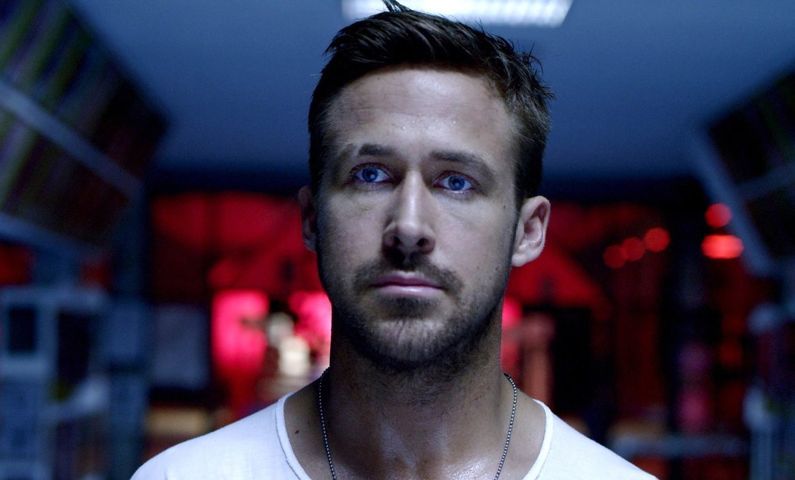
The best-looking movie in Refn’s repertoire, “Only God Forgives” is a brutal (yet oh-so-gorgeous) story entailing everything from drug-dealing to Muay Thai in a tale of revenge set against the backdrop of a neon-lit Bangkok. It was the first movie Rehn directed after the resounding success of “Drive”, and as such, was possibly his most highly anticipated production to date.
The film features some genuinely hypnotic scenes, constructed through the careful fusion of wonderful, multicolored lighting, strikingly stylized violence (a Nicolas Winding Refn trademark) and a fantastic soundtrack composed by frequent collaborator Cliff Martinez. However, it is held back by uneven pacing and awkward (though thankfully rare) dialogue, keeping it from greatness. Still, despite its narrative flaws, “Only God Forgives” is a stunning movie experience and one of Refn’s career highlights, standing as possibly the biggest showcase for the Danish director’s aesthetic sensibility.
4. Pusher
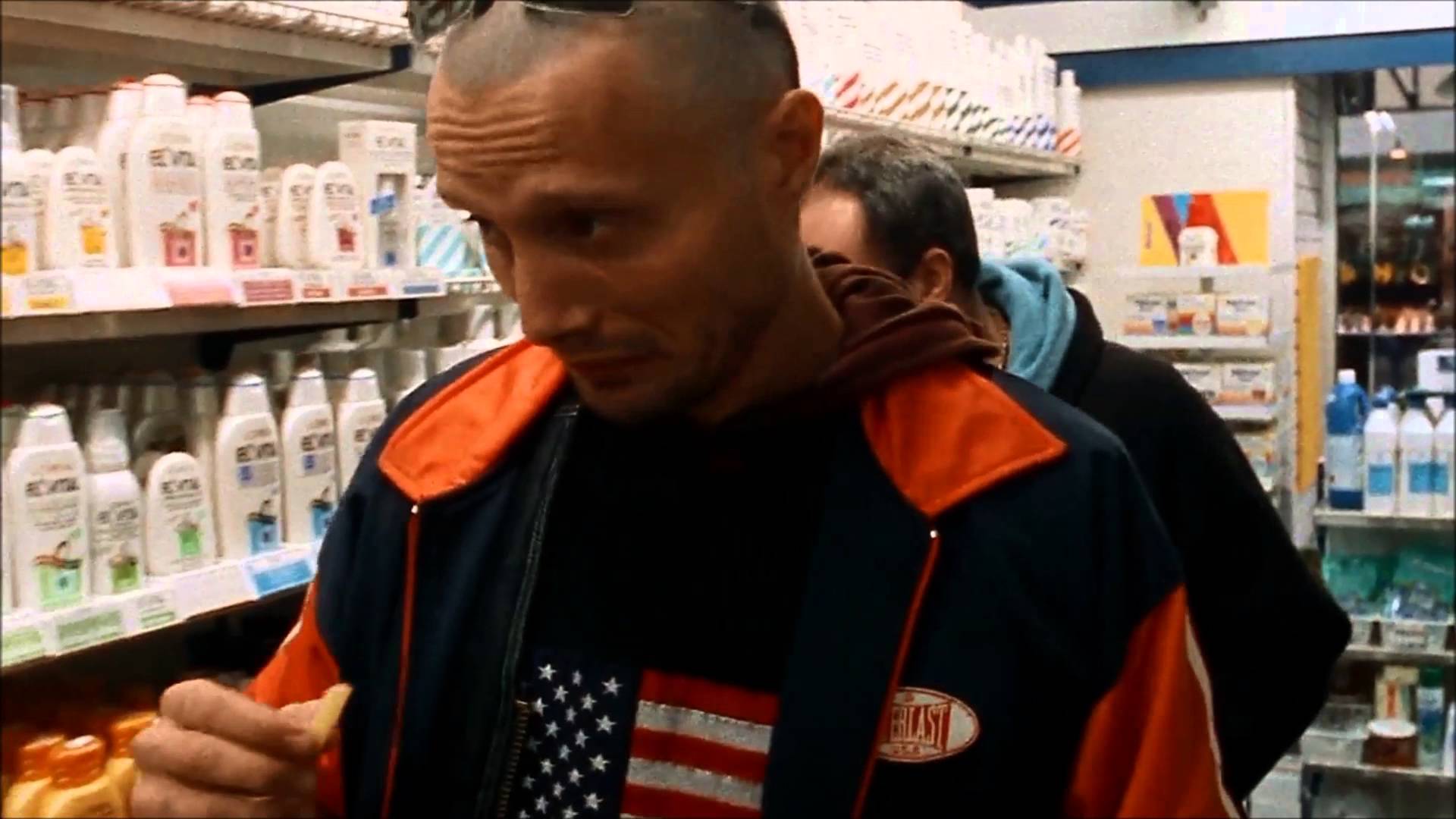
Refn’s debut put him on the map with a bang, as he made an instant name for himself through this enthralling take on the urban crime genre. Released in 1996, “Pusher” is a raw, nerve-wracking representation of Denmark’s underworld, exposing the rough day-to-day life of a pair of small-time crooks who find themselves in dire straits.
An unknowing viewer who turns to this movie after watching and enjoying one of Refn’s more recent films might be quite surprised by how radically different its tone and style is, as the Danish director started out his career with a more realistic, borderline documental approach to filmmaking, in stark contrast to the more fantastic, oniric of his modern works.
Commanding performances by Kim Bodnia and Mads Mikkelsen, both young and unestablished, help to conduct this emotional rollercoaster, wherein problems escalate at an alarming rate, leaving spectators with their hearts in their throats as cataclysmic events unfold implacably in a very tangible, convincing manner. The movie’s absolutely stirring finale leaves one desperate for a sequel and might just be this film’s high point.
3. Pusher II
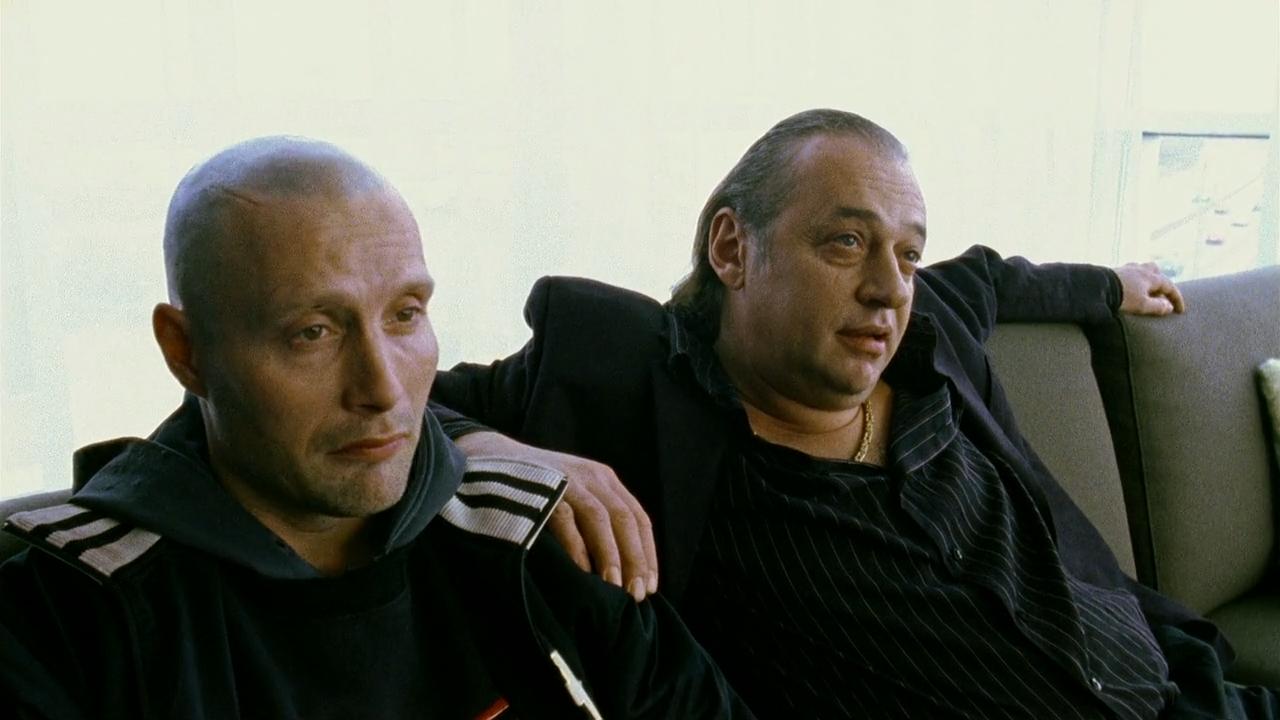
The continuation of “Pusher” took 12 years to be released, but the long wait was well worth it, as the timeframe allowed Refn to improve his skills as a director and pull off a rare instance of a sequel surpassing the original. As far as sequels go, “Pusher II” treads an unusual path, not serving as an immediate, direct follow-up to the events of the first film, but rather as a shift in perspective, focusing solely on Tonny, one half of the duo the first film centered around, and leaving Frank (the other half)’s fate mysterious.
The long-awaited successor to “Pusher” retains the original’s tension, pitting a fundamentally flawed, occasionally savage Tonny against increasing perilous odds as he finds himself unable to escape the ruthless environment he is a part of, and also adds a degree of sentimentality to the gamut of emotions invoked throughout the film, eliciting greater catharsis than the first movie and causing a greater involvement with the plot and its characters.
Mikkelsen, true to form, remains at the top of his game in this performance, evoking both sympathy and disdain, showcasing his versatility (Tonny is the polar opposite of One Eye) and helping to solidify “Pusher II” as one of Refn’s finest achievements.
2. Bronson
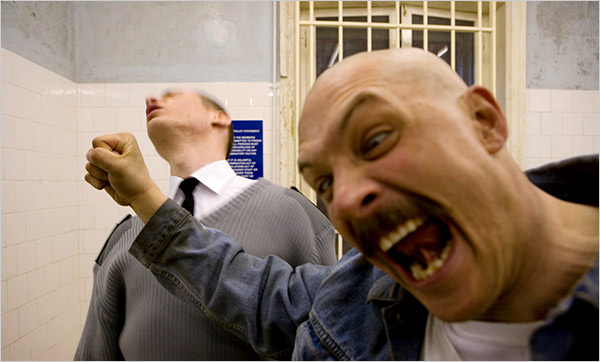
“Bronson”, released in 2008 on a minimal budget, tells the story of real-life figure Charlie Bronson (now known as Charles Salvador), a muscular, aggressive man, and the years of abuse he was (and continues to be) subjected to by Britain’s precarious, extremely violent and inhuman prison system. This marvelous twist on the biopic genre fuses fantasy and reality in a unique way, detailing the exploits of Bronson dating back to his infancy, when he was still known as Michael Peterson, all the way up to his adult life as a perennial inmate with a penchant for brawling and an utter disregard for authority.
Tom Hardy’s tour-de-force performance as the titular character propels this wonderful epic to its status of greatness, with a flawless portrayal of this fascinating, complex, truly larger-than-life man, in a movie that doubles as an exposition of a very interesting character study and a strong denouncement of the system that perpetuates the violence it supposedly vows to stop. Refn’s directorial vision is largely successful in this film doing away with to-the-point, straightforward biographical movies, in favor of an imaginative, theatrical and whimsical piece, punctuated by an excellent selection of songs that contribute to its singular feel.
1. Drive
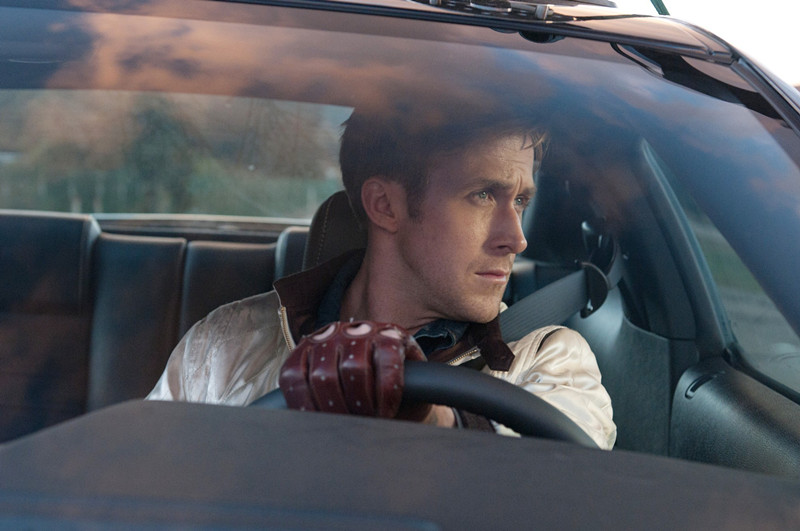
2011’s “Drive” is, undoubtedly, Refn’s most popular movie, starring Ryan Gosling as a quiet, mysterious getaway driver who finds himself tangled up in an overwhelming predicament. The film’s popularity stems from all the right reasons, as it is Refn’s magnum opus, almost perfect in every aspect of filmmaking, right down to the stylish font used in the credits – a cursive pink, which, from the moment the title appears on the screen, to the sound of Kavinsky’s hit single “Nightcall”, instantly sets the mood for the rest of the movie: that of a loving homage and modern reinterpretation of 80’s aesthetics.
Rehn was able, with “Drive”, to create a very particular feel, one that is reminiscent of heist films past, but that is, at the same time, not quite like any of them, possessing a near-intangible, airy vibe that makes the whole viewing experience feel like a dream. The modern fairy tale, as Refn himself refers to it, manages to perfectly balance intense, heart-stopping action (punctuated by cathartic, captivatingly stylized violence) with delicate, romantic moments (this equilibrium is epitomized by the classic elevator scene).
The soundtrack, at the vanguard of the nascent synthwave movement, is revolutionary to say the least, paving the way for several artists to experiment with the genre (which consists of electronic music inspired by 80’s synthesizer pop) and influencing countless contemporary audiovisual productions, setting the tone for the retro nostalgia wave taking over modern pop culture.
The narrative, a frequent weak point in Refn’s body of work, fits in perfectly with the movie’s aesthetic, featuring slick dialogue conceived by screenwriter Hossein Amini, which was cut down to a minimum by Refn during production, creating a sublime sense of nuance, wherein the characters express themselves in a strongly non-verbal way, allowing the subtleties in their countenances to do most of the talking. Refn’s “Drive” is his masterpiece and the go-to movie when analyzing his feats as a filmmaker.
Author Bio: Max Rumjanek is a Scottish-born Brazilian who lives in Rio de Janeiro. He goes to film school in Niterói and, when not drinking beers at the local bars, has been known to watch the occasional movie. His other interests include: playing video games, watching MMA and listening to melodic hardcore. Hit him up if you need Portuguese-English translations done!